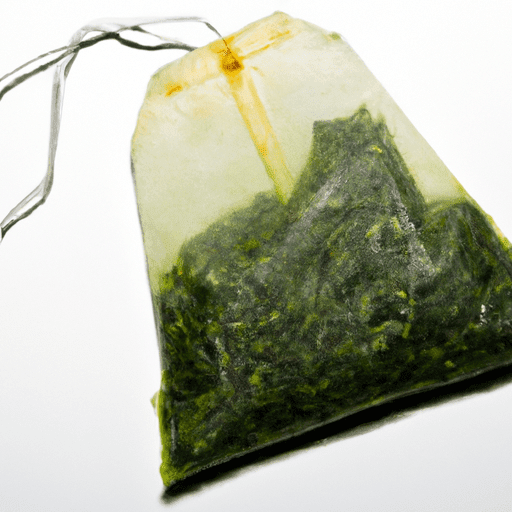The Wonderful World of Green Tea Bags: A Cooking Delight
Green tea has long been celebrated for its numerous health benefits and refreshing taste. While many enjoy a soothing cup of green tea as a beverage, did you know that green tea bags can also be a fantastic addition to your cooking repertoire? In this post, we will explore the taste, cooking uses, nutritional value, and intriguing facts about green tea bags.
The Taste of Green Tea Bags
Green tea bags offer a unique flavor profile that is simultaneously delicate, grassy, and slightly astringent. This nuanced taste derives from the unique processing method of the tea leaves, which are typically steamed or pan-fired to preserve their vibrant green color and natural freshness. When transformed into a culinary ingredient, green tea bags can infuse dishes with a wonderful earthiness that enhances both sweet and savory recipes.
Cooking with Green Tea Bags
Green tea bags can elevate a wide array of dishes, spanning from beverages to desserts and even savory entrees. Here are a few delightful uses for green tea bags in your cooking adventures:
1. Infused Beverages
Begin your green tea adventure by infusing a delicate green tea flavor into your beverages. Simply steep a green tea bag in hot water and make a refreshing iced green tea or a comforting hot brew. For a creative twist, try incorporating green tea into cocktails or mocktails by infusing it with citrus fruits or herbs like mint or basil.
2. Flavorful Marinades
Green tea bags can supercharge your marinades, infusing your proteins with a hint of earthy goodness. Combine brewed green tea with soy sauce, ginger, garlic, and a touch of honey to create an enticing marinade for meats like chicken, fish, or tofu. The natural astringency of the tea will tenderize the proteins and add complexity to your dish.
3. Exquisite Desserts
Green tea’s unique flavor is a fantastic addition to desserts. Add a green tea bag to your custards, ice creams, or puddings during the cooking process to impart a luscious green tea essence. For an extra eye-catching treat, sprinkle some powdered green tea (matcha) over your favorite pastries, cakes, or cookies to lend an irresistible green hue and a distinctive earthy flavor.
Nutritional Value of Green Tea Bags
Beyond its flavorful contributions to your culinary creations, green tea bags offer several health benefits. Rich in antioxidants, green tea is known to boost the immune system, reduce inflammation, and promote heart health. Additionally, it contains a modest amount of caffeine, providing a gentle energy lift without the jitters commonly associated with coffee.
A Brief History and Fun Facts about Green Tea Bags
The history of tea dates back over 3,000 years to ancient China. Green tea, specifically, has been cherished and consumed for centuries. Traditionally, loose tea leaves were used to brew green tea. However, the invention of the tea bag in the early 20th century revolutionized tea consumption around the world, making it more convenient and accessible.
Here are some fascinating facts about green tea and tea bags:
- Green tea originated in China but is now cultivated in several countries, including Japan, India, and Korea.
- Matcha, a powdered form of green tea, is an integral part of Japanese tea ceremonies and has gained popularity worldwide.
- Tea bags were accidentally invented by American tea merchant Thomas Sullivan in 1908 when he sent out samples of tea in small silk bags. The recipients assumed they were intended for steeping, giving birth to the tea bag we know today.
- Tea bags made from paper gained popularity during World War II when rationing required the preservation of resources.
- Green tea bags, due to their fresh and vibrant flavor, have become a beloved ingredient in both traditional and modern cuisine worldwide.
Green tea bags provide a delightful and versatile addition to your culinary expedition. Their delicate taste, numerous cooking applications, and impressive health benefits make them a must-have for any food enthusiast. So, the next time you reach for a cup of green tea, consider exploring its potential as a cooking ingredient too. Happy tea and cooking adventures await!
Origin
- Green tea bags are a convenient way to enjoy green tea, which originated in China over 4,000 years ago.
- The cultivation and production of green tea spread to other countries in Asia, including Japan, Korea, and India.
Common Uses
- Green tea bags are commonly used to prepare a quick and easy cup of green tea by steeping the tea bag in hot water for a few minutes.
- Green tea bags can also be used to create flavored iced teas or incorporated into various recipes, such as desserts, smoothies, and marinades.
Nutritional Benefits
- Green tea contains powerful antioxidants called catechins, which are believed to have various health benefits, including reducing the risk of certain chronic diseases.
- It is a great source of polyphenols, which are known for their anti-inflammatory and anti-cancer properties.
- Green tea bags contain caffeine, although the caffeine content is generally lower compared to black tea or coffee.
Unique Properties and Historical Significance
- Green tea undergoes minimal oxidation during production, preserving its green color and giving it a more delicate flavor compared to black tea.
- In traditional Chinese medicine, green tea was valued for its supposed therapeutic properties, including promoting mental alertness, reducing fatigue, and aiding digestion.
- Green tea holds cultural significance in Japan, where the tea ceremony called “chanoyu” or “sado” is often performed using powdered green tea called matcha.
Please note that while green tea has been associated with various benefits, it is important to check with a healthcare professional for personalized advice, particularly if you have any underlying health conditions or are taking medication.




Use the share button below if you liked it.
It makes me smile, when I see it.